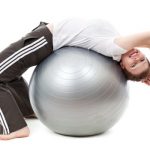Don’t launch yourself into a new exercise regime without taking the necessary precautions to prevent back and neck pain…
While more exercise can in fact improve bone mass density and prevent osteoporosis, throwing yourself into a full-on physical programme after a lull in activity could put your back and neck at risk. Try introducing your body to exercise in a safe way by following these easy tips:
Preparation
- Before you begin any exercise programme, check that there are no medical reasons why you cannot carry out the activity, particularly if you are not used to the type of exercise
- Make sure you wear the right clothing while carrying out your chosen activity. Wearing clothes that are too tight could constrict your movement and lead to injury; appropriate footwear is a must for any type of exercise
- Make sure you warm up before exercises; don’t go straight in and start with lighter movements like walking or jogging to lessen the chance of muscle strain
Equipment
Ensure that you are using equipment properly to prevent injuries.
Weights
- make sure legs are at least hips width apart
- lift with bent knees
- never keep knees straight, as this could lead to over-stretching and cause damage to your back
- work with weights closer to your body to help avoid injury
Machines
- make sure the seat is positioned correctly for your height
- avoid stooping or reaching when using equipment or you could over stretch your back
Stretching
Stretches and exercises designed to strengthen your back will help prevent injuries later on. Try sequences of precise, slow stretches, which will help build up your strength.
More
Choosing a balanced diet containing the right vitamins and minerals decreases our chances of developing deficiencies later on in life. The  body’s structure relies on vitamins and minerals to ensure muscle tone (including the heart), healthy functioning of nerves; correct composition of body fluids; and the formation of healthy blood and bones.
body’s structure relies on vitamins and minerals to ensure muscle tone (including the heart), healthy functioning of nerves; correct composition of body fluids; and the formation of healthy blood and bones.
A Healthy Diet Plan
Calcium
For bone, muscle and joint health try and include Calcium in your diet, which is essential for optimal nerve and muscle function and blood clotting.
Obtained from
Dairy products are rich in calcium that is easy to absorb. Non – dairy sources with equally absorbable calcium are green leafy vegetables from the kale family. Spinach, rhubarb, sweet potatoes and dried beans are rich in calcium but from these foods it’s not easily absorbed
Magnesium
Required for efficient muscle contraction and conduction of nerve impulses. Low magnesium levels in the body can affect the body’s calcium levels, putting bone health at risk.
Obtained from
Green leafy vegetables, unrefined grains and nuts. Small amounts are present in meat and milk. Large quantities of fibre in the diet and low protein intake can reduce the amount of magnesium able to be absorbed by the body.
Vitamin D
Essential for regulating the formation of bone and the absorption of calcium from the intestine. Vitamin D is a fat-soluble vitamin that functions to help control the movement of calcium between bone and blood.
Obtained from
Primarily from the action of UVB light on the skin. Food sources such as cod liver oil, sardines, salmon, tuna, milk and milk products contain small amounts of Vitamin D.
Vitamin C
The structure of bones, cartilage, muscles and blood vessels is provided in part and maintained by collagen. The formation of strong efficient collagen requires Vitamin C.
Obtained from
Citrus fruits, berries, tomatoes, cauliflower, potatoes, green leafy vegetable and peppers. Also important for producing strong collagen and therefore strong bone structure, is Folic acid. Folic acid is found in cereals, beans, green leafy vegetables, orange and orange juice
Antioxidants
Vitamin C is also a strong antioxidant and is capable of regenerating other antioxidants like vitamin E. The role of antioxidants is to mop up free radicals (the by-products of normal metabolism). Excessive amounts of free radicals cause damage to joint surfaces and muscle cell regeneration. Antioxidants reduce the potential of these free radicals to cause joint damage.
Obtained from
Antioxidants are vitamins A, C, E and the mineral selenium and are present in fruits and vegetables, the highest quantities are found in the most deeply and brightly coloured. Cartilage that lines the articulating surfaces of all joints is critical to joint health. Cartilage is the shock absorber of joints and is continually rebuilt if a source of raw materials is available. Supplements such as glucosamine sulphate can be added to a healthy diet to assist joints that maybe showing signs of wear and tear.
Essential fatty acids
Essential fatty acids (EFA’s) also reduce the degenerative changes in tissues and cells. EFA’s are unsaturated fatty acids such as Omega 3. They aid in decreasing the inflammatory response and help relieve pain and discomfort in joints and muscles.
Obtained from
EFA’s can be found in oily fish (sardines, fresh tuna, mackerel), flax seed and linseed.
Foods to avoid…
There are certain foods and substances that adversely effect the body’s use of minerals and vitamins. High saturated/animal fats, refined foods, white flour, white sugar, white rice, chocolate, carbonated drinks and fruit juices with high sugar concentration should be kept to a minimum if not weaned from the diet completely. Meat and dairy products should be kept within a recommended weekly amount. Dairy products as calcium sources should be varied with other non-dairy sources.
More
If you’re following the trends in exercise and fitness, you’ve probably heard the phrase “core strength” or “core stability.” These terms refer to the muscles of your abdominals (stomach) and back and their ability to support your spine and keep your body stable and balanced, helping to prevent back pain.
The core muscles lie deep within the trunk of the body. They generally attach to the spine, pelvis and muscles that support the scapula. They stabilise these areas to create a firm foundation for co-ordinated movement of the legs and arms.
Core stability is also needed in everyday life, helping to keep you fit and to prevent injury when you are lugging those heavy shopping bags or doing the ironing. Rises in back pain incidence have been linked to the sedentary lifestyle that many of us lead. How about neck and shoulder pain? Time spent hunched over the desk instead of getting out and about can mean that we don’t pay enough attention to posture, and the muscles of those crucial “corset” muscles.
To strengthen your core stability:
- Start by lying on your back with knees bent.
- Your lumbar spine should be neither arched up nor flattened against the floor, but aligned normally with a small gap between the floor and your lower back. This is the “neutral” lumbar position you should learn to achieve.
- Breathe in deeply and relax all your stomach muscles.
- Breathe out and, as you do so, draw your lower abdomen inwards as if your belly button is going back towards the floor.
- Hold the contraction for 10 seconds and stay relaxed, allowing yourself to breathe in and out as you hold the tension in your lower stomach area.
- Repeat 5-10 times.
Bear in mind the following points:
- Do not let the whole stomach tense up or your upper abdominals bulge outwards, as this means you have cheated by using the large rectus abdominus muscle (the six-pack).
- Do not brace too hard; just a gentle contraction is enough. Remember it’s endurance not max strength your are trying to improve.
- Do not tilt your pelvis nor flatten your back, as this means you have lost the neutral position you are trying to learn to stabilise
- Do not hold your breath, as this means you are not relaxed. You must learn to breathe normally and maintain the co-contraction.
- Use your fingers for biofeedback on either side of your lower abdomen to feel the tension.
Once you have mastered the abdominal hollowing lying on your back, practise it lying on your front, four-point kneeling, sitting and standing. In each position get your lumbar spine into neutral before you perform the hollowing movement. If you feel any pain or discomfort while doing these exercises, then stop immediately and seek medical advice before continuing.
More
For us to maintain the very high standard of service, care and support for you, we will be restructuring and slightly increasing clinic fees from April 2019:
Chiropractic
Treatment Adult £36, Child (under 16 years) £30
Double appointments £50
New Patient Adult £52, Child (under 16 years) £40
Massage therapy
One hour £40 (concessions £35)
Half Hour £20 (concessions £17:50)
More
Christmas 2018 Opening Hours
Friday 21st December 8am – 5pm
Sophie, Ruth
Saturday 22nd December 8am –12 noon
Sophie
Sunday 23rd December Closed
Monday 24th December 8am-12 noon
Andrew
Tuesday 25th December Closed
Wednesday 26th December Closed
Thursday 27th December 8am-8pm
Andrew, Alex
Friday 28th December 8am -5pm
Alex
Saturday 29th December 8am-12noon
Andrew
Sunday 30th December Closed
Monday 31st December 8am-12 noon
Andrew , Alex
Tuesday 1st January Closed
Wednesday 2nd January 9am -8pm
Normal hours resume
More

We know that facial muscles affect facial expression, and in turn can influence emotion, but it’s rarely considered that other muscular states can also affect mood. Research suggests that this is the case and that sitting upright can build resilience to stress.
Especially when under pressure and distracted, people are likely to pay less attention to their posture. However, research indicates that good posture at times of stress can help to maintain self-esteem and positive mood, whereas slumped postures have the opposite effect.
It is important to take care of your posture and there are a number of ways to do this, both at home and at work, and especially when using a computer.
- When relaxing in a chair, such as when watching television, it is important to ensure that as much of the body as possible has contact with the chair for optimal support.
- Avoid sitting for more than 30-40 minutes at a time. Remember to stand up, stretch, change position, walk around and go and get a drink of water!
- When stretching, concentrate on opening up your chest, abdominal area and hip flexors. Your chiropractor can advise you on the best movements for this.
- Perform exercises to strengthen the muscles that support your posture. Exercises such as resistance band pull-aparts are good, and your chiropractor can advise you on other suitable exercises.
Of course, perhaps the time that slouching most commonly occurs in our society is during the hours that are spent hunched over a desk, working at a computer.
- Ensure that your desk, chair and monitor are set up following proper guidelines.
- Take regular breaks. Set a timer to remind yourself if you’re guilty of forgetting to do this when immersed in work.
- If using a laptop, ensure that is placed on a desk or table rather than your lap to avoid looking down, slouching, and leaving your neck unsupported.”
Your chiropractor will be able to conduct a postural analysis and suggest stretches, exercises and lifestyle changes that can improve your seated posture and enhance your mood.
More
Sometimes the cause of back pain is obvious, for example a sports injury.
However… Sometimes the culprit could be surprising, such as improper footwear, especially high heels.
Why do they cause damage? When women wear high heels their body will attempt to compensate for the uneven balance they cause by flexing or forward bending their hips and spine. Heels can cause people to mimic the way a person would walk on a ramp and thus increase the pressure placed on the balls of the feet and the knees.

Lower Back
The lower back is also pushed forward causing the hips and the spine to become dis-aligned. The changes to the posture cause a prolonged tensing of the calves, hips and back muscles. This results in excess muscle fatigue and strain at the end of the day. Over long periods of time this can cause serious problems for your leg muscles and spine health
The Height of the Heel
The height of the heel can also determine the weight carries be the footwear. As the height of the heel increases so does the pressure on the ball of the foot. Stilettoes can therefore cause the most damage to your posture and overall spine health. It is therefore advised where possible to wear as lower a heel as possible
How to help your back:
If you do wear high heels take a few aspects into consideration to make sure you’re causing yourself as little damage as possible
- Try and avoid wearing high heels for long periods of time where possible
- If you have to commute each day it is wise to commute in flat shoes that cushion and support the natural arch of your foot and change into high heels when you get into the office
- If you do wear a lot of high-heeled shoes try and opt for ones with a lower, wider heel, preferably no higher than two inches, to reduce the amount of pressure being placed on your feet and calf muscles
- It can also be wise to buy shoes in the afternoon, when feet are at their largest, this will make sure your shoes will be to accommodate for the natural expansion of the feet throughout the day.

Make Sure Not To Trip!
As your balance can be more unsteady when you wear high heels it increases the possibility of you tripping over and causing yourself an injury. In consideration of this, it is a good idea to opt for shoes with a leather insole to keep the foot from slipping and provide a steadier grip when you’re walking around
More
 Today’s modern living which often entails hours of driving and hunching over work stations plays havoc with your neck. Neck pain can be felt in a large number of ways, either in your neck itself, across the shoulders, down the arms or as a headache. Neck and back problems are often worsened, if not caused, by improper sleeping habits and bad or worn out pillows. Sleep is very important to your body’s repair process, and a poor pillow often accounts for disturbed sleep. Compromise the quality of sleep, and overall health and mental fitness may suffer as well.
Today’s modern living which often entails hours of driving and hunching over work stations plays havoc with your neck. Neck pain can be felt in a large number of ways, either in your neck itself, across the shoulders, down the arms or as a headache. Neck and back problems are often worsened, if not caused, by improper sleeping habits and bad or worn out pillows. Sleep is very important to your body’s repair process, and a poor pillow often accounts for disturbed sleep. Compromise the quality of sleep, and overall health and mental fitness may suffer as well.
To support your tender and vulnerable neck you need to use a pillow that can be shaped to hold your neck in alignment and adequately support your head. This relieves muscle tension around your neck and shoulders and correctly positions your head, arms, and lower back for a relaxed sleep.
The support of a pillow should be mostly under your neck. Pillows that can be fluffed and squished to fit your unique contours, shape, and sleeping posture offer the best solution. A pillow should “fit”, just like a pair of shoes.
Natural-fill pillows such as down and feather provide the most comfort, long-term performance, and adjustability of any pillow, and they gently support your head. Unfortunately, most people hang on to a pillow long after its healthy sleeping power.
It is crucial you avoid using little or no pillow as this places your unsupported neck under strain all night long. It is equally unwise to use too many pillows or a pillow that is too firm as this can push your neck up, preventing the neck joints from moving properly, regardless of which position you sleep in.
It is also important to remember that a pillow should be placed between your neck and shoulder, but not underneath your shoulder itself. Taking this into account, a person with broader shoulders will require a larger pillow than someone with narrower shoulders, if they sleep on their side.
More
As Chiropractor’s we mainly see patients presenting with back and neck pain. Over the years and thousands of appointments there are most certainly some common themes that have repeated themselves – either in terms of the process that results in an injury, or what advice we give out to help prevent it from happening again. Here is our tried and tested two-step process that is a great foundation for minimising spinal injuries and the impact they can have on your life:
1. Understanding how injuries to the spine happen: In clinic the level of pain that patients sometimes present with can be quite high! And you would expect the level of force that caused the injury to mirror that. However only 5% of the problems we see in clinic are due to a substantial amount of sudden force. 95% of the problems arise from milder, but accumulative strains over time. These smaller strains often go un-noticed, until they build up and the ‘my back just went’ story starts. This is where the threshold for injury has been reached, and most often results in the call to the Doctor or Chiropractor. If you listen to your body whisper and you won’t have to hear it shout. In reality sometimes it is too late and it is definitely shouting (in the form of pain and damage). Once you have had treatment or have recovered you can learn to pick up on the whispers (niggles and tension) and aim to prevent problems from occurring.
2. Planning for injury prevention: Everyone knows prevention is easier than cure, and now we know how most spine injuries happen we need some prevention tactics. ‘Micro-breaks’ are a key addition to your spinal health and minimise the accumulative strain process. For example if you are at your desk all morning, every 20 minutes you can roll your shoulders backwards 10-15 times, give the back a good stretch up with a deep breath in, or just volunteer to make someone (and that can include oneself!) a cuppa. In the garden you can of course use the same micro-break process, but can also take advantage of ‘active breaks’ to share the load to different areas of your spine, without losing valuable working time. In this scenario if you are working for 4 hours in the garden, and spend 2 hours on your knees working low down, and then 2 hours digging, those accumulative strains have time to build up and possibly take you closer to that injury threshold. If you switched tasks every half an hour or so, this varies the load and allows the area of your body to recover whilst doing a different task. Dealing with back and neck pain is obviously more complicated than just using these two steps (otherwise that was a long seven years of studying for that concept!), however with our approach these two steps are always integrated in successfully treating and preventing so many types of spinal problems. Try to listen when your body whispers and use these tips for a healthier spine.
More
We would like the thank the 242 patients who completed the questionnaire in August for their support – the results are great as you can see – thank you. It was amazing that 100% of you felt that you would recommend your friends and family to us and this is the best way to share the benefits of chiropractic – by sharing your experience.
We were sad to learn that many of you are unaware of the information available to you on our website – so try and have a little browse around there when you have time – if you are on Facebook – don’t forget to like us t hen you will get up to date tips and information as soon as we get them.
hen you will get up to date tips and information as soon as we get them.
Look out for this months challenge where Andrew is asking you to give us a review on Google please.
The Clinic:
- Do you find the clinic’s opening hours meet your requirements for calling to make appointments and for your treatment sessions? 100% Yes
- When you call the clinic to make appointments do you find your call is answered promptly?
Always 92% Sometimes 5% Not often 1 % Never 0%
- Do you find the receptionists to be helpful and pleasant in offering you the appointment you require?
Always 96% Sometimes 3% Not often 0% Never 1%
- If you are unable to gain an appointment, are you offered a place on the waiting list?
Always 47% Sometimes 7% Not often 1% Never 0% NA 45%
- How do you travel to the clinic? Please circle all that apply
Car 93% Taxi 4% Bus 2% Tram 4% Bike 5% Walk 13% Other 8%
- If you travel by car do you manage to obtain a parking space?
Always 82% Sometimes 8% Not often 0% Never 1% N/A 9
- When you arrive at the clinic are you always welcomed by the receptionists?
Always 99% Sometimes 1% Not often 0% Never 0%
- Do you find the facilities the reception area offers meet your needs?
Fully 92% Mostly 8% Not Really 0% Not at all 0%
Your treatment experience:
- Are you seen on time for your appointment?
Always 52% Sometimes 45% Not often 3% Never 0%
- Do you feel that your chiropractor listens to you?
Always 98% Sometimes 2% Not often 0% Never 0%
- Do you find that your chiropractor understands your condition and helps you understand what your problem is?
Always 98% Sometimes 2% Not often 0% Never 0%
- Does your chiropractor explain what your treatment procedure involves and what it is trying to achieve?
Always 90% Sometimes 10% Not often 0% Never 0%
- Does your chiropractor share addition advice and information with you? Yes 100%
If yes please circle all that apply:
Exercise and fitness 79%, postural advice 58% diet advice 15%
Healthy living and lifestyle 21% other 8%
Communication:
- Do you find the text reminder service helpful? Yes 95% / No 1% / NA 4%
- Did you know there is an out of hours help line? Yes 53%/ No 47%
- Do you find the clinic newsletters informative? Yes 62% / No 13%/ NA 25%
- Do you use the clinic website? Yes 19% / No 72% / N/A 9%
- What do you use it for? Circle all that apply:
contact details 4% opening times 5% price guide 2% information 7%
blogs 3% podcasts 8% newsletters 7% exercise videos 41% other 8%
- Are you on Facebook? Yes 55% / No 42% / N/A 3%
- Did you know that the clinic shares topical information on Facebook on a regular basis?
Yes 19% / No 70% / N/A 11%
- Would you recommend your friends and family to the clinic? Yes 100% /No
- How would you rate your overall experience of the clinic on a scale of 1-10?
(10 being excellent and 1 being poor) 66% 10/10, 27% 9/10, 6% 8/10. <1% 7/10
More


 body’s structure relies on vitamins and minerals to ensure muscle tone (including the heart), healthy functioning of nerves; correct composition of body fluids; and the formation of healthy blood and bones.
body’s structure relies on vitamins and minerals to ensure muscle tone (including the heart), healthy functioning of nerves; correct composition of body fluids; and the formation of healthy blood and bones.



 Today’s modern living which often entails hours of driving and hunching over work stations plays havoc with your neck. Neck pain can be felt in a large number of ways, either in your neck itself, across the shoulders, down the arms or as a headache. Neck and back problems are often worsened, if not caused, by improper sleeping habits and bad or worn out pillows. Sleep is very important to your body’s repair process, and a poor pillow often accounts for disturbed sleep. Compromise the quality of sleep, and overall health and mental fitness may suffer as well.
Today’s modern living which often entails hours of driving and hunching over work stations plays havoc with your neck. Neck pain can be felt in a large number of ways, either in your neck itself, across the shoulders, down the arms or as a headache. Neck and back problems are often worsened, if not caused, by improper sleeping habits and bad or worn out pillows. Sleep is very important to your body’s repair process, and a poor pillow often accounts for disturbed sleep. Compromise the quality of sleep, and overall health and mental fitness may suffer as well. hen you will get up to date tips and information as soon as we get them.
hen you will get up to date tips and information as soon as we get them.